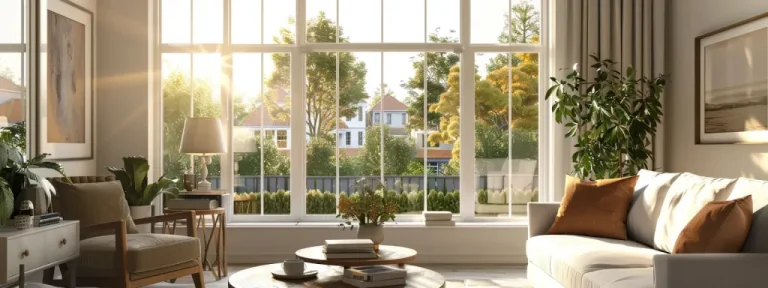Deadbolt Basics: What You Need to Know for Home Security
Securing your home starts with strong locks. Deadbolts are one of the most reliable options available. They add extra protection against break-ins and forced entry.
Unlike spring bolt locks, deadbolts need a key or thumb turn to open. This makes them harder to bypass. Many homeowners use deadbolts on exterior doors for added peace of mind.
Learning about deadbolt basics helps you choose the right kind for your needs. If you’re serious about security, don’t skip this important step.
Start exploring the options with these key points below.
Difference Between Single and Double Cylinder Deadbolts
Single and double cylinder deadbolts look similar but work differently. A single cylinder deadbolt has a key slot on the outside and a thumb turn on the inside. It’s commonly used on doors without glass panels.
A double cylinder deadbolt needs a key for both sides. This adds security but can be a fire hazard in an emergency. Some homeowners prefer the double cylinder in high-risk areas.
Others feel safer with quick exit access. Think about how you use your doors daily. Pick the style that fits your routine and safety needs.
How Deadbolts Work
Deadbolts use a solid metal bolt that slides into the door frame. This makes them harder to force open compared to regular locks. When you turn the key or thumb turn, the bolt moves into place.
There are no spring-loaded parts, which reduces the chance of failure. The strength depends on the bolt length and the strike plate on the frame. A one-inch bolt is a good standard. Longer bolts offer more resistance to prying.
A solid metal strike plate adds to the overall strength. Always test the lock to make sure it turns smoothly.
Materials That Make a Difference
Deadbolts are made from various metals, and that affects how strong they are. Hardened steel is one of the best choices. It resists cutting and drilling better than softer metals.
Brass and bronze are also used but can be less durable. Avoid lightweight or hollow parts. The internal mechanism should also be metal, not plastic. Look at the weight and feel of the lock.
A heavier lock usually means stronger materials. Make sure the finish also resists weather and corrosion. Strong materials lead to longer-lasting security.
Why Door Frame Reinforcement Matters
A strong deadbolt means nothing if the door frame is weak. Most break-ins involve kicking in the door, not picking the lock. Reinforcing the frame stops this from happening easily.
Use long screws that reach into the wall studs. Replace thin strike plates with heavy-duty ones. Some reinforcement kits come with metal wraps for the frame. Adding a door jamb reinforcement plate also helps.
Always check if your frame feels loose or damaged. If it flexes when you push it, reinforcement is needed. A secure frame makes the whole setup stronger.
Choosing the Right Door for a Deadbolt
Not all doors are strong enough for deadbolts. Solid wood and metal doors are ideal. Hollow-core doors don’t offer enough support. If your door is weak, the deadbolt won’t do much.
You can upgrade the door or install metal wraps. Check that the door edge isn’t cracked. Make sure it closes tightly and doesn’t wobble. Measure the door thickness to match the lock.
Most deadbolts fit doors between 1-3/8 and 1-3/4 inches thick. A good door gives your deadbolt something strong to lock into.
Proper Deadbolt Installation Tips
Correct installation is key to a secure lock. Misaligned holes can weaken the setup. Always drill the bolt hole deep enough for full extension. The strike plate should sit flush in the frame.
Use a chisel to clean the edges if needed. Secure the strike plate with long screws. Check that the bolt moves without resistance.
Make sure the door doesn’t bind or rub. A locksmith in Midland, TX can help if you’re unsure. A professional job ensures the lock works as intended.
Importance of Bolt Throw Length
The bolt throw is how far the deadbolt extends into the frame. Longer throws offer more resistance to force. A standard throw is usually one inch. Some locks have shorter throws, which are easier to pry open.
Always check the specs before buying. The bolt should fully extend into the strike hole. If it doesn’t, the lock won’t hold under pressure. You may need to adjust the hole depth or position. A deeper throw adds another level of defense.
Maintenance and Longevity
Deadbolts don’t need much maintenance, but a little care helps. Dust and dirt can build up in the keyhole. Use a can of compressed air to clear it. Avoid using oil, which can attract grime. Use a graphite lubricant if the lock sticks.
Check the screws on the strike plate regularly. Tighten anything that feels loose. If the key turns with effort, check the alignment. Warped doors can cause problems. Regular checks keep your lock working properly.
Smart Deadbolts and Security Tech
Smart deadbolts add extra features like keyless entry. Some use keypads, others work with apps. These locks offer convenience and control. You can give access to guests without handing out keys.
Some models log entries and alert you of tampering. Always pick models with strong physical locks too.
Batteries power these systems, so check levels often. Backup keys are still needed in case of failure. Look for models that offer both tech and solid construction.
When to Replace Your Deadbolt
If your deadbolt feels loose or sticks, it might be time for a replacement. Older locks can wear out or become misaligned. If you’ve lost a key or had a break-in, replace it right away.
Also, upgrade if your current lock has a short bolt throw. Cracks around the door edge or frame are signs to check. If you’ve made changes to the door or frame, the lock may no longer fit well.
Don’t ignore signs of rust or corrosion. A new deadbolt can bring peace of mind. Upgrading also gives you a chance to boost overall security.
Educate Yourself About Deadbolt Basics
Understanding deadbolt basics gives you more control over home safety. Choosing the right lock and installing it properly makes a real difference. Reinforcing the frame and door boosts strength.
Regular checks keep everything in working order. Smart locks add modern convenience. If the current setup feels weak or old, it’s time for an upgrade. Don’t leave your home’s security to chance.
With the right deadbolt and setup, you protect what matters most. Always stay one step ahead of potential risks.
Should you wish to read more, visit our blog page. We’ve got more topics!





